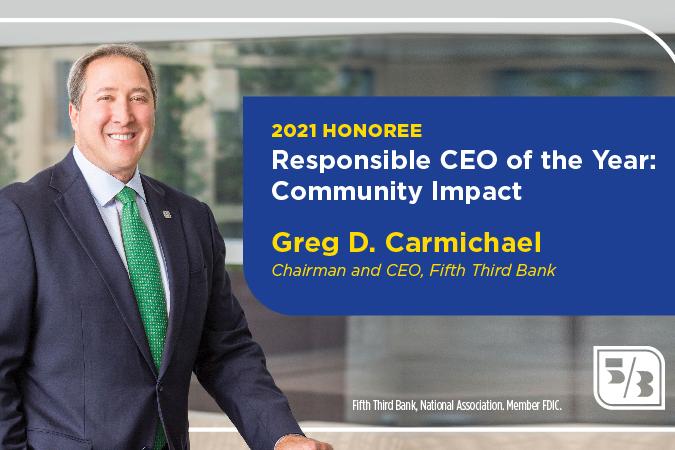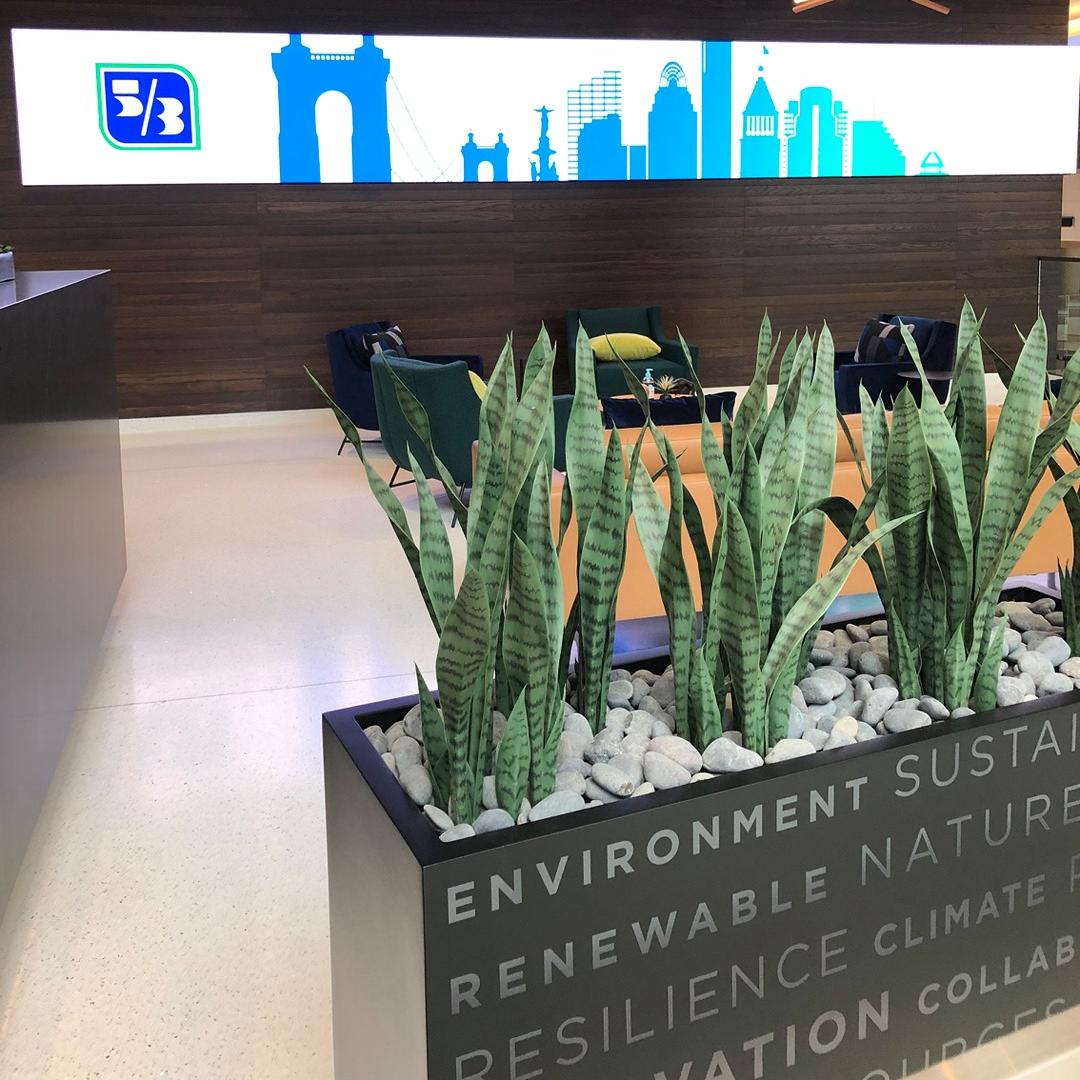A Job Is Not Enough: How To (Really) Support Our Troops


Military veterans who return to civilian life can face a battery of hurdles. Many employers have responded by engaging in new programs to hire veterans. That is all well and good, but much less attention has been paid to the challenges faced by military spouses seeking civilian jobs. That is a yawning gap that no single employer can fill.
One paycheck is not enough
Anthony Noto, CEO of the financial services firm SoFi, pinpointed the military spouse problem in a recent op-ed for CNN. “Serving our country can cause unique financial challenges down the road,” he wrote “For some, these financial limitations last far beyond their initial transition into the post-military working world. Frequent moves can make it difficult for military spouses to find jobs that offer a steady, second source of income, limiting families to one paycheck.”
Noto’s piece focuses specifically on helping veterans plan for retirement. However, his mention of military spouses deserves closer attention, especially as the COVID-19 pandemic has forced more women and other family caretakers to leave their jobs and tend full-time to the needs of their children and other dependents.
When a military family moves, a working spouse loses more than a job, even in the best of times. They can also be cut off from their caretaker networks including family, friends and neighbors. When they do find work in their new location, they may need to rely more heavily on paid caretakers. That can have a significant impact on their take-home income.
Much has been made of the job-ready skills acquired by military veterans, which help them take advantage of employment opportunities in new growth areas like the wind energy and solar energy sectors. However, their spouses bring no such training to the table. Military spouses also face difficulty in continuing their education or training for new skills, limiting their opportunities when the family transitions to civilian life.
The employment challenges faced by military spouses impact the entire household. Maintaining a family on one military income can be difficult under the best of circumstances. The high cost of rent and other expenses in some military communities has long created additional pressure on household incomes. The pandemic and the current inflationary environment have exacerbated the situation, leading more active-duty families to rely more on food banks and other sources of social support than ever before.
Employers need to recognize that student loans are a serious problem
Employers may have limited avenues through which to provide assistance directly to military spouses, but Noto advises that employers can at least help provide significant assistance to military families by enabling more veterans to save for retirement.
“Recent research has confirmed veteran families struggle to maintain adequate emergency savings funds, with nearly half (49 percent) of those who receive no pension reporting they have less than $500 in their emergency savings (and nearly one in four families who receive a pension reporting the same),” Noto observes.
Noto suggests that employers can start by educating themselves about the financial situation of the individual veterans they hire, especially in the area of student loans. He points out that many veterans start their retirement plan only after they finish their education through their GI Bill benefits, which means they get a very late start on saving. Paying off student loans can further delay retirement savings.
Standard retirement plans don't cut it either
Employers that offer standard 401(k) plans are not helping employees who are so burdened by student debt that they cannot afford to contribute to a retirement plan. Employers need to be proactive and pursue solutions, such as an IRS Private Letter Ruling. Noto also indicates that lobbying in support of proposed federal legislation in that area would enable employers to accommodate student debt in their 401(k) plans more easily.
He also urges employers to understand that many veterans do not pursue or finish a college education, placing them at risk of falling behind their civilian counterparts. A holistic “well-being” program would address the cost of education from the past to the present, and into the future. These programs account for student loans, current tuition and college savings plans for dependents where applicable.
Other ways to help veterans and their families
Noto also encourages employers to provide educational resources and guidance that can help veterans with bad credit records avoid similar mishaps in the future.
Handing veteran employees a pile of brochures and a list of links can be a good start, but Noto urges employers to connect veteran employees with financial planners who can give them individual, personalized attention.
“As the colliding worlds of work, company culture and education continue to evolve, our definition of well-being — and efforts to support veterans' unique needs — will need to do the same. In the meantime, ensuring resources are allocated toward programs that provide a mix of short- and long-term impact, while also delivering measurable, mutual benefit to both employers and employees, will foster a brighter financial future for all,” Noto concludes.
The missing link in all of this is the military spouse. They face unique challenges in the civilian workforce, and those difficulties are compounded when children and other dependents are members of their household.
Corporate leaders from Etsy to Microsoft, Patagonia and Seventh Generation understand how the lack of affordable child care holds back families and businesses. As members of the Care Can’t Wait Coalition, they have been lobbying for more federal support for both child and family care services.
Access to child and family care also impacts access to affordable higher education and job training, two other key areas that could be addressed through federal action.
As originally conceived, U.S. President Joe Biden’s Build Back Better bill would go a long way toward filling these gaps in social policy. Unfortunately, as of this writing the bill is at risk of dying on the vine. If it does survive, its family care provisions and other social spending are all but certain to be whittled down to provide less help to fewer people.
Corporate leaders who profess to support veterans can pick up the slack by lobbying for additional federal child care, family support, education and job training programs that pick up where Build Back Better leaves off and provide more resources for military spouses as well as veterans.
A Second Chance with a Guaranteed Income Boost


The idea of offering a second chance to people with criminal records was gaining traction within corporate America before the coronavirus pandemic hit. Part of this shift in attitude was pragmatic: The U.S. had 7 million job openings in late 2019, and organizations like the Society for Human Resource Management (SHRM) had offered (and still do) companies the tools and guidance necessary to make second-chance hiring a more seamless process.
Now, there are at least 10 million job openings across the U.S., yet discussions about second-chance hiring have largely ceased. Some of the reasons are obvious: We can start with the lasting impacts of the COVID-19 crisis, including disruptions across the global supply chain, which of late have consumed everyone’s attention.
Nevertheless, the reality has not changed for people trying to re-emerge from the criminal justice system and rebuild their lives. In fairness, some industries are responding: A leading banking group says it is encouraging its members to consider second-chance hiring, and retailers such as the Body Shop are testing out the “open hiring” model that Greyston Bakery has long championed.
Editor's note: Be sure to subscribe to our Brands Taking Stands newsletter, which comes out every Wednesday.
Now, a coalition in northern Florida is trying to make a second chance possible by offering a monthly guaranteed income in order to assist the formerly incarcerated as they dust themselves off and get back on their feet.
In Gainesville, Florida, and surrounding Alachua County, Just Income GNV got its start by offering a monthly cash stipend of $300 for low-income residents during the pandemic. Working with the social impact venture Community Spring, local leaders have since launched a similar pilot program that focuses on local citizens affected by incarceration.
The 2020-2021 effort proved successful, so another round of the Torchlighters Re-Entry Support program will start after the new year. A group of 115 randomly selected people will receive $1,000 in January 2022, followed by $600 a month for the rest of the year, Fast Company reports. Applications are ongoing for Alachua County residents who were recently put on probation or released from prison.
The project is entirely privately funded by Community Spring and Mayors for a Guaranteed Income.
Supporters of the program say this financial commitment can help break the cycle of poverty and recidivism. Here's the deal: Society assumes that once formerly incarcerated people are released, they're restarting their lives with a clean slate. But consider the hurdles these men and women face as they try to find jobs and places to rent. One 2018 study concluded that the formerly incarcerated are 10 times more likely to experience homelessness than the rest of the U.S. population; another analysis suggested that the unemployment rate for people with criminal justice histories is more than 25 percent.
“When justice-impacted people have an income floor, they will devote time and resources to finding meaningful employment, stable housing and addressing their trauma,” wrote Kevin Scott, who himself was once incarcerated and is now a fellow with Community Spring, along with Lauren Poe, the mayor of Gainesville, in a recent op-ed for the Gainesville Sun. “They will be equipped to overcome a system that reincarcerates based on bank accounts. They will be able to contribute to their families, build careers and participate in their community as fully-valued members.”
Image credit: Ali Abdul Rahman via Unsplash
A Look into COP26: Does the World Have a Shot?


Photo: The Scottish Event Campus, the venue hosting COP26 in Glasgow, on November 6.
Negotiators representing nearly 200 countries used just about every second of the two-week COP26, the global climate conference in Glasgow, Scotland, to reach an agreement to reduce global emissions of greenhouse gases. The intense summit culminated in an agreement that Christina Figueres, who headed the UN climate change convention in Paris that resulted in the 2015 climate accords, described in a Guardian op-ed as “more complex and far reaching than any transformation we have ever attempted.”
Though COP26 did result in some positive strides with nations reinforcing their commitments to thaw the heating planet, U.K. Prime Minister Boris Johnson may have characterized it best when in his closing statements he said, “My delight at this progress is tinged with disappointment.”
Diplomats and government leaders, analysts argued, didn’t go far enough to push the planet off its cataclysmic path. The pledges and targets agreed to in the Glasgow Climate Pact may not be aggressive enough to prevent the world from heating up 1.5° Celsius by later this century. Analysis published to the Climate Action Tracker shows that even if countries meet the targets they set for 2030, global temperatures would still be estimated to rise 2.4°C above pre-industrial levels.
The worldwide mission to prevent global warming by 1.5°C was a cornerstone commitment from the Paris Climate Agreement. Scientists have warned that the seemingly slight rise in global warming will have disastrous global impacts, including widespread and indefensible water shortages, famines and heat waves. Natural disasters like hurricanes and floods stand to dramatically increase in a warmer world — it’s a future where etymologists may rebrand the term “1,000-year floods.”
Not all hope is lost, though. The Glasgow Climate Pact, along with many lower-profile pledges and agreements made during COP26, signaled that the world is starting to treat the climate crisis with the greater urgency it deserves. Brazil and Russia, two of the world’s most heavily forested countries with nefarious track records in protecting their carbon-absorbing bounty, joined more than 100 other countries in a pledge to end deforestation by 2030. More than 100 countries also signed on to cut methane emissions, a gas that is 80 times the warming power of carbon dioxide, by 30 percent by 2030.
The world’s biggest polluters, China and the United States, signed a surprise joint pledge that lacked specific details but is an encouraging sign of cooperation among two rivaled titans of manufacturing. India, one of the world’s largest consumers of coal, promised to have net-zero emissions by 2070.
Still, India and China rebuked the pact’s phrase to “phase out” fossil fuels, instead rallying negotiators to weaken it to “phase down.” It’s progress, but watered-down progress.
The conference also provided a space for developing nations to revisit the empty financial promises wealthier nations made to them more than a decade ago. The world's wealthy nations had agreed that by 2020, they would mobilize at least $100 billion to support developing nations combat climate change and respond to disasters. They’ve fallen notably short of fulfilling what’s known as the “loss and damage” fund, a sum that even if reached still falls short of the amount of investments needed to create far-reaching improvements.
COP26 was a reminder of an ongoing divide worldwide: Rich countries disproportionately contribute to climate change while poorer countries disproportionately bear the burden of climate-induced disasters. Greenhouse gasses emitted from the ports such as those in Osaka and Nagoya contribute to warming oceans that are engulfing island nations like Tuvalu. Meanwhile, emerging economies like Indonesia, South Africa, Nigeria and India are less keen to reduce their coal consumption, and it’s obvious why. Those nations are trying to grow their industries with the same competitive advantage and lack of regulation countries like the U.S. and U.K. had long deployed to develop their massive economies. In sum, the loss and damage fund would not only provide low- and middle-income nations much needed insurance when faced with natural disasters, but also help these nations transition away from dependence on fossil fuels.
Through all the agreements, pledges, commitments, targets and handshakes, it remains to be seen whether the conference served more as lip service (as famed activist Greta Thunberg coyly put it: “blah, blah, blah”) or whether it’ll be the catalyst for lasting, tangible change. The world is watching, and the clock is ticking; 2030 will be here before we know it.
Image credit: UN Climate Change/Facebook
Five Reasons We Should All Try to Buy Less Stuff


As the noise over global supply chain disruptions crescendos, here’s one idea we should hear more from the news outlets: Let’s all take a step back and buy less stuff. Dialing back consumption for a while could be what the supply chain doctor ordered until everyone across the supply chain is caught up. It’s not only the planet that will thank us, but also countless people around the world whose souls are being crushed due to a crisis that is largely self-inflicted.
We all know that our insatiable consumer habits are leading to a collision course with climate disaster. But there are several reasons why the upcoming holidays should be a time to look inward and focus on those around us, instead of flinging our wallets and credit card numbers outward. Here’s a brief list to start, amplified by some of the best thought leaders on this subject out there.
Curbing our trips to the mall (brick-and-mortar or online) could help the global supply chain reset
Let’s start by being pragmatic.
Talk of shortages in the U.S. has reached hyperbolic levels. It’s not that shelves are bare: Let’s all take a breath and remember that we are not living in North Korea or behind the Iron Curtain of the 1980s. The problem is that the more affluent are accustomed to buying what they want, when they want — meanwhile, the millions of lower-wage workers for whom the pandemic was a life-upending event have had few options other than to get by with far less. The problem is that those of us who have been easily saving up cash, due to the fact that many of us had no choice but to stay home and spend less, now want what we want and want it now. Retailers are responding in kind, and therein lies a huge problem, observed Amanda Mull in The Atlantic.
“But what’s already a genuine crisis for people who work in the global supply chain could very well turn into one for all of us,” Mull wrote last week. “The manufacturing and distribution of necessities such as food and medicine require many of the same resources as the consumer economy’s various conveniences and diversions.”
Mull makes the analogy of the ingredients needed for making school lunches, a process that helps nourish millions of American kids. The problem festering at our clogged ports is that if a company that distributes pricier consumer goods (Mull’s example is hundred-dollar throw pillows), that company will probably have the means to pay for access in getting those goods out of ports and onto trucks — a level of access that a food distribution company, running on thin margins, will not be able to match financially. The squeeze is then felt by those very school districts in the quest to get those monogrammed throw rugs and pillows out to consumers who have the coin to snag them.
The bottom line is that we need to chill when it comes to our shopping habits, take a collective step back, and just let all those goods through. And, by the way, they are: Despite all the screaming and finger-pointing in the media that supposedly nothing is going through the ports, and whose fault is it, imports are surging. The value of imports arriving in the U.S. last month were almost 50 percent higher than they were in September 2019. And no, that figure is not due to inflation.
Our demand for goods, supply chain kinks or not, is punishing workers
Since early on during the pandemic, TriplePundit has covered the human costs that are largely shouldered by low-wage workers. Even if the worst of this crisis is behind us, many workers are still suffering due to our unquenchable demand for things.
Count many truckers among those who currently have no choice to buy less stuff. The trucking of products in and out of ports is a punishing one, a process that doesn’t pay by time spent or miles driven, but by truck loads. Business Insider’s Grace Kay recently chronicled what many truck drivers are going through in Southern California. Many queue up, waiting as long as eight hours at a time, only to risk being told there are no shipments with which they can drive away.
“Some drivers say the industry has a reputation for negative paychecks, as independent contractors are typically responsible for about 90 percent of trucking expenses, including leasing trucks and paying for fuel,” Kay wrote earlier this month. “If they can't deliver at least one load per day, then they can't pay their bills — much less turn a profit.”
A shift to “sustainable” shopping doesn’t mean we’ve decided to buy less stuff
It’s not a cliché: By the raw numbers, Americans, compared to the rest of the world, are addicted to shopping. Sure, we could simply buy bamboo or wooden toothbrushes instead of plastic ones and buy synthetic moisture-wicking clothing that is made out of plant-based fibers instead of those derived from fossil fuels. Such a tweak in buying habits isn’t tackling the consumption problem, however.
“Shopping, by this logic, is a sin, one that Americans can’t live without. Well-intentioned consumers have tried to do the next-best thing: Shop sustainably,” Terry Nguyen of Vox wrote last month. “But sustainable shopping is still ... shopping. It’s an oxymoronic act that makes us feel good about the things we buy. True sustainability requires reducing our consumption (and, likely, the country’s economic growth), not through buying ‘greener’ products.”
An economy focused on consumption isn’t sustainable in the long run
Depending on the source cited, consumer spending comprises about two-thirds of the U.S. economy. Across the pond in Europe, that figure is just over 50 percent. One could argue that lower consumption across Europe explains the continent’s relatively slow economic growth over the past few decades, but an economy dependent on buying cheap goods from abroad also means less long-term investment in new, next-gen technologies. And as a modest rebuttal to the point Vox’s Nguyen made earlier, there are other avenues to long-term, sustainable economic growth other than consumer spending.
“Long-term, sustainable growth doesn't come from going deep into debt to buy stuff we don't really need,” Allison Schrager recently wrote for Bloomberg. “It comes from technology and innovation, where we come up with new products and better ways of doing things.”
Gentle reminder: Accumulating stuff has an impact on our mental health
“I have everything I need right here. And if I've learned anything from how my mom spent the money I gave her, it's that money can buy a lot of snowmobiles, but it can't buy happiness. So it's about how you live your life. You know, doing what makes you smile. And being here, getting to hear your stories over the past few years, even the scary ones, that makes me smile.” – Twyla Sands of Schitt’s Creek explaining to Alexis Rose why she never disclosed her $46 million lottery winnings, Season 6, Episode 13.
It's true: There is no shortage of research concluding that buying things may give us an initial rush, but that feeling wanes quickly. Shopping is its own form of insanity, as in doing the same thing over and over again and expecting different results.
“There are many reasons [for shopping], of course, but one is that we purchase things to make us happy. Certainly, that's the message transmitted to us in most advertising,” Matthew Smith explains in Psychology Today. “But even if our purchase makes us happy initially, the feeling rarely lasts. Soon enough, we are off to buy something else before long.”
It was not that long ago when our evenings were spent telling and listening to stories as Twyla had described. In fairness to those who are hooked on shopping, as is the case with many addictions, quitting cold turkey may not be the most realistic path.
Hence the suggestion to not buy things, but experiences. True, an experience is not completely stuff-free: We’re still technically buying things, whether it’s booze at a tasting room, a meal at a restaurant, or gas to get us to that fun destination or open space.
But there are two immediate benefits to buying an experience. First, you’re investing in memories, which buying stuff won’t necessarily allow. Second, the chances are high that you’re helping a small business recover from a rough 2020 and 2021 — and that is reason enough for a commitment to simply buy less stuff, one that should make you smile.
Image credit: Bing Hao via Unsplash
How This CEO’s Focus on ESG Performance Allows Owens Corning to Keep Reimagining Sustainability


Owens Corning Headquarters in Toledo, Ohio
Immediately upon taking becoming CEO at Owens Corning in 2019, Brian Chambers led the way in expanding the company’s ongoing commitment to sustainability. That same year, the company announced its third set of long-term sustainability goals to be achieved over the next decade.
The company’s target 2030 sustainability goals are what it says its most comprehensive and ambitious to date, ones designed to expand its business impact through continuing its commitment to incorporate material environmental, social, and economic initiatives into Owens Corning’s global practices and operations.
Chambers, who also serves as the Owens Corning’s chairman, established a few key tenets for those 2030 goals: “Our goals must be what the world expects of us, not what we think we can do.” In other words, any such goals must be Owens Corning’s leadership goals, not simply the goals of the company’s sustainability team.
With Chambers setting the tone, Owens Corning’s slate of 2030 sustainability goals builds on three fundamental pillars: expanding its products’ handprint, reducing the company’s environmental footprint, and expanding Owens Corning’s social handprint. These three pillars, from the company’s perspective, represent a reimagining of the very concept of sustainability.
That strong focus has resulted in Chambers being named as this year’s Responsible CEO of the Year: ESG Transparency.
“I’m most proud of the recognition this brings to my 19,000 colleagues around the world who wake up every day and work hard to achieve our goals in sustainability,” Chambers said during last month’s webcast of 3BL Media’s 2021 Responsible CEO of the Year Awards. “This recognition and frankly all the recognition we’ve received around sustainability and our impact that we’re having on the environment and the impact we’re having on our customers and in the communities where we work and live.”
Without diminishing its focus on environmental challenges, Owens Corning says it is extending this concept to include an emphasis on improving the quality of life for the people with whom it coexists across the globe. Under Chambers’ leadership, Owens Corning has ramped up its efforts to improve the lives of the people in communities in which it operates while fostering a culture of inclusion among all of its employees.
“We’ve been on a journey at Owens Corning for close to two decades now. And I think like many companies, we started our journey really focusing in on the footprint and our reductions in terms of air pollution, water usage, energy consumption and waste to landfill,” added Chambers. “And then we’ve really evolved this through a series of our goals and objectives, to today, where we’re very proud to be focusing not just on continuing with our footprint reduction, but really as focused on how to we expand the positive impact of our products with our customers … and then, how do we really increase our impact in the communities where we work and live and really promote healthy work and lifestyles for all of our employees?”
As for long-term social impact, Owens Corning’s 2030 goals for diversity and inclusion work include having 35 percent of global mid-level leader, director, and vice president roles to be filled by women; as of 2020, 25 percent of top management positions within Owens Corning were held by women. By 2030, the company seeks a diverse minority representation rate of 22 percent for identified key roles within Owens Corning.
Chambers’ leadership, often described by his colleagues as “decisive,” also led to the issuance of the company’s initial green bond in August 2019, making Owens Corning the first U.S.-based industrial company to issue such a bond. As part of that bond’s announcement, the company has committed to spend at least $445 million on eligible sustainability projects. The company is also using the funds to expand the company’s work in renewables, energy efficiency and circular economy-adapted products.
“Our purpose is for our people and our products to make the world a better place,” Chambers wrote in the introduction of Owens Corning’s 2019 ESG report, issued during the peak of last year’s global pandemic. “The company has an immediate responsibility to help people – our own employees and those around us, including our families, our communities, and all our other stakeholders – and that’s our focus.”
Image credit: Owens Corning (still shot of video)
PGA Tournament Venue Proves Golf Can Be Sustainable


With the first tee times dating back to the early 1400s, the Old Course in St. Andrews, Scotland is far and wide known as the birthplace of golf. It’s poetic, then, that as golf’s home country welcomed world leaders to Glasgow’s COP26 to tackle the generation-defining challenge of climate change, the first-ever PGA tour champions event committed to zero-waste teed off some 4,000 miles away in South Florida.
The TimberTech Championship’s pledge to zero-waste is signaling a new era in golf — one that cares as much about going green as it does hitting the green.
The AZEK Company, who owns the decking company TimberTech and sponsored the Boca Raton-based PGA Champions Tour event for a second straight year, set up a wide range of eco-friendly initiatives to qualify as a zero-waste tournament (the event’s certification is pending). For one, they sourced plant-based, compostable cutlery throughout the event to eliminate single-waste plastics. Compost bins throughout the course were well-marked and valiantly guarded by green shirt-wearing volunteers who helped attendees understand how to properly dispose of their waste. If trash snuck into the wrong bin, volunteers would perform the unglamorous (read: heroic) task of fishing through and resorting through the trash to keep the zero-waste promise alive.
AZEK’s commitment to creating a zero-waste event was reinforced by the golf club which hosted the tournament. Broken Sound Club (pictured above) was just the second golf club in the United States and 14th in the world to be certified by the Golf Environment Organization (GEO), an honor reserved for the most sustainable courses. Its on-site compost digester will transform the waste collected during the tournament into soil, which can be used to plant and maintain wildflowers. The wildflowers not only beautifully dot the banks of the lakes woven into the club’s grounds, but they also nourish bees hailing from the 22 beehives that live on campus.
The tournament is just a microcosm of the investment AZEK has made into sustainability. They’ve named their flagship sustainability initiative “Full-Circle,” a nod to the circular decking economy it’s hoping to achieve through its intensive recycling program.
“Our purpose is to revolutionize outdoor living to create a more sustainable future,” Amanda Cimaglia, VP of ESG at AZEK said. “We’ll do that through a thoughtful, consistent approach — both inside and outside the walls of our organization, and the TimberTech Championship is just one example of that.”
AZEK leverages partnerships across the country to collect scraps of materials including lumber, PVC pipes and plastics. These scraps are sent off to one of its two — soon to be three — recycling centers where the materials are broken down and repurposed into beautiful, long-lasting decking boards.
AZEK hopes its opening of a manufacturing facility in Boise, Idaho, will inch it closer to achieving its goal of recycling one billion pounds of recycling goods annually by 2026. It’s possible the once-ambitious goal is achieved before the self-imposed deadline — in 2020 alone, AZEK recycled 400 million pounds of materials.
A major factor in reaching that lofty goal is embracing the different types of recycling materials that end up at their facility. Though milk cartons may be the crown jewel of recycling these days, AZEK CEO Jesse Singh said being selective over which materials to convert into decking “defeats the purpose.” He mentioned AZEK is after hard-to-recycle materials — items that would otherwise clog a landfill for years on end.
The company is anchored by its core tenet: “Always Do The Right Thing.” In an era when clients are increasingly conscious of investments, a business that inextricably links environment, social and governance to its operations represents wins for all stakeholders: customers, investors, AZEK and most importantly, the environment. Singh knows this well.
“We’re taking hundreds of millions of pounds of scrap, waste, and landfill-bound trash and processing it for the core of our product,” he said. “So, the more we use, the more we’re doing for the environment and the better our margins are. The positive impact we have on the planet is real; it’s tangible.”
Through the “Bags to Beauty” initiative, AZEK enabled attendees at the TimberTech Championship golf tournament to feel the tangible impact of their recyclables. Fans were encouraged to bring plastic grocery and shopping bags to the tournament - bags which would later be sent to one of AZEK’s recycling materials and transformed into decking materials. Attendees were also able to see firsthand the product that these recycled goods can create, as two TimberTech decks were staged as viewing platforms for fans cheering on golfers at the tee box of Hole 10 and the green of Hole 16.
AZEK, in partnership with the timber company Weyerhaeuser, also pledged to plant 322 trees in the host state of Florida - one for every fan who added their name to a wall showcasing the A-Z-E-K letters.
The quest for zero-waste also takes quite a bit of creativity. Even the drab, grey artificial turf that lined the floors of the Media Center tent will be sent to a local art nonprofit for upcycling.
Cimaglia said she hopes the zero-waste efforts will inspire other PGA events to become more sustainable: Though she cautioned that it doesn’t have to be an all-or-nothing approach.
“We want this tournament to be a model for other tournaments,” Cimaglia said. “Others may choose to go zero-waste, like we have, but there’s any number of other initiatives that companies can do and build on year after year.”
AZEK will have a chance to continue championing sustainability on the golf course as TimberTech returns as the title sponsor to the South Florida tournament through 2023.
Disclosure: TimberTech covered the costs of the author’s recent trip to the tournament’s venue in South Florida.
Image credit: Broken Sound Club via Facebook
Unconscious Bias Can Be Useful but Is Imperfect. Let It Perish in the Workplace.


Unconscious bias can help us to make efficient decisions. We use it to decide if a restaurant is likely to suit our tastes or if it is likely to rain. Where unconscious bias can be a critical issue is when we form incorrect chains of beliefs about individuals because of the limited information we have available. This can happen in two ways: either the extrapolated chain of beliefs is generally wrong; or the chain is specifically wrong for the person in front of us.
In recruitment we frequently see both of these issues play out, leading to the loss of talent, and the unfair treatment of individuals. A recruiter sits in front of an applicant of a different ethnicity and extrapolates an inaccurate chain of beliefs about the individual. For example: they don’t know that Portugal has some of the greatest computer scientists in the world and inaccurately assume that a Portuguese computer scientist will be subpar to those from California or the U.K. This type of error can often be corrected with further education and research. Unconscious bias training can be helpful for this kind of situation.
The second error is much more troublesome. This is a case where an extrapolated chain of beliefs is generally accurate, but not in this particular case. That is, you accurately hold a belief about the quality of education on a particular topic in a particular country, but the individual sitting in front of you happens to be astonishingly capable despite this. The problem with this situation is that one cannot expose the brain to new information that will make it change the extrapolated belief chains. Arguably, nor should we. After all, they are largely accurate. In this case, unconscious bias training will yield no result. The more accurate information we expose our brain to, the more it will reinforce this unconscious bias.
What can be done in situations such as these? Rather than relying on chains of extrapolated information that is not directly relevant for the recruitment of the job in question, we can change our process to focus on only the "meritocratic" or relevant elements and objective measures of cultural fit.
This is the approach we see from Deloitte, McKinsey, and several other top-tier companies. McKinsey recently dropped all university grade requirements. Instead, it added an extra screening stage relying on quantitative psychometrics and situational judgement analysis. It wanted access to the best candidates and realized that several of these would naturally be outliers falling into categories other than top universities and standard diploma criteria. Unilever similarly introduced a gamification setup to replace CVs for its initial talent screening. Candidates instead complete online tasks that measure their skills, abilities, and suitability for the role. This has had a great impact on the quality and diversity of hires.
In recent years, innovative hiring processes have taken to the stage where tech and AI work hand in hand with recruiters to supplement each other’s shortcomings and fairly screen the most suitable talent into roles. It is an exciting time and evidence is already abundant that the diverse teams formed by progressive companies and their innovative hiring process, vastly outperform those CV screened by humans relying solely on their own inference.
By transforming hiring processes, and later management processes, to only factor in directly relevant variables for job performance, progressive companies are increasing their competitive advantage. Companies who rely on CVs and human intuition will get left behind when competing against supercharged recruiters supported by technology and AI. It is a great situation, when the companies that also champion a moral cause gain a competitive advantage because of it.
Spread the word. Unconscious bias is useful, but imperfect. Let it perish in the workplace.
Image credit: Prottoy Hassan via Unsplash
Guest articles reflect the opinions of the bylined authors and not necessarily those of TriplePundit’s editors and writers.
A CEO’s Vision: The Driving Forces Behind Fifth Third Bank’s Rise as Leading on Innovation and Sustainability


Greg D. Carmichael received the 2021 Responsible CEO of the Year for Community Impact for his exceptional leadership and dedication to Fifth Third Bank's significant impact on the communities it serves.
While staying true to Fifth Third Bank’s vision to be the “one bank people most value and trust,” the company’s core values, its customer-centric approach and its financial discipline have undergone even more of a transformation over the past five years under Greg D. Carmichael’s leadership.
Fast forward from November 2015, when Carmichael became the company’s CEO, to this year: Fifth Third, now the ninth-largest U.S.-based consumer bank, is widely recognized as one of the most innovative and sustainability-focused banks.
Carmichael is guided by his vision of “Doing Well by Doing Good,” which he has continued to communicate internally among all employees of the bank; and he’s said so repeatedly to stakeholder groups including the wider financial sector and community partners, and done so through both traditional and social media.
His strong leadership has guided the company’s c-suite and he still goes out of his way to rally all of Fifth Third’s employees behind his vision. Carmichael believes in commitments, takes accountability and seeks to lead by example.
Carmichael’s drive has been evidenced by his commitment to the local communities the bank services, a pledge that dates back to 2016. Fifth Third recently delivered $41.6 billion in various community commitments, surpassing its 2016 pledge to better serve its communities with a comprehensive $32 billion, five-year plan, which to date is the largest such project announced by a regional bank. By the end of 2020, Fifth Third had over-delivered on its financial commitment by an impressive 30 percent.
“If you want something to be different, you’ve got to do different things,” said Carmichael during last month’s webcast of 3BL Media’s 2021 Responsible CEO of the Year Awards. “So, making a large community commitment, the largest of any of the regional banks, was something we wanted to do because it was meaningful. Establishing that purpose was fundamentally important that we get that out there.”
Included in these plans includes funds for funding environmental sustainability projects, investments in renewables, dovetailing with six broad goals for diversity and inclusion. Transparency is important to Carmichael and Fifth Third: It was among the first banks to disclose diversity data, and more recently it has ranked within the top quartile of financial institutions that disclose ESG reporting.
“If you’re not transparent, I don’t believe that you are going to buy the trust from the organization to be successful, Carmichael said. “Transparency is fundamental to delivering any objective, and that transparency leads into accountability.”
In a similar way by which Carmichael has developed the people and organization under his leadership, he has also instilled the systems and processes necessary to set the strategic direction to allocate scarce resources. This approached has bolstered Fifth Third’s determination to have the operating infrastructure to deliver on its ESG commitments.
As his colleagues say, by leading with intention, Carmichael has ensured that skills and capabilities exist within the organization to deliver on the company’s ESG strategy. He has led by defining the key attributes of Fifth Third’s culture, and has modeled them as such while empowering his team to deploy and lead initiatives that have pushed Fifth Third toward this aspiration.
“There is real value in sustainability. The term sustainability often is associated with environmental policy, but it’s more than that to us,” Carmichael wrote in the company’s 2019 ESG report. “We have an eye on sustainability with every business decision we make. Building sustainable, scalable programs, products and services is how we have a transformative, generational impact on our communities.”
A replay of the awards ceremony can be viewed here.
West Virginia is Front and Center in the Global Energy Transition


The waterfront at Wheeling, West Virginia
The coal-producing U.S. state of West Virginia has grabbed the media spotlight this year, mainly due to the powerful influence of Democratic U.S. Senator Joe Manchin over federal energy policy. The impact appears to have rippled into the COP26 climate talks in Glasgow, where U.S. efforts to accelerate the global energy transition have fallen short of expectations. Nevertheless, signs of a breakthrough have begun to emerge.
When is an energy transition not an energy transition?
One COP26 action that has drawn attention is a new coal pledge. Formally introduced on November 4, the agreement enlists 40 nations in a commitment to end new coal power plants.
Critics were quick to jump on the U.S. and other nations that did not sign the pledge. However, in terms of fostering the clean energy transition, the pledge itself is a hollow one.
Media attention has focused mainly on one aspect of the pledge, which calls for nations to help accelerate the energy transition by refusing public financing for new coal power plants overseas.
That is actually not what the pledge calls for. The main focus of the pledge is to steer more financing towards carbon capture technology, in order to reduce carbon emissions from new coal power plants.
The four-part pledge “Global Coal to Clean Power Transition” pledge is careful to define its target for elimination as “unabated” coal power plants, meaning power plants without carbon capture technology. “Our shared vision is to accelerate a transition away from unabated coal power generation,” the pledge reads.
The first item in the pledge calls for nations to scale up “clean power generation,” a loose category that could include coal with carbon capture. The second item underscores that intent by calling for scaling up technologies and policies “to achieve a transition away from unabated coal power generation.”
The pledge also calls for nations to stop issuing new permits for coal power plants within their borders, but it specifies that the ban only applies to unabated coal power plants. It also calls for nations to stop public financing for new coal power plants overseas, but it specifies that the ban applies to “direct government support for unabated international coal-fired power generation.”
The fourth item in the pledge circles back around to the vague “clean energy” category in the first item. It appears to place coal power with carbon capture in the category of a “clean energy” transition that provides support for workers and communities that currently depend on unabated coal jobs.
West Virginia takes center stage in energy transition
The “unabated” loophole looms large in contrast to President Joe Biden’s aggressive posture on climate action. In that respect, perhaps the White House was reluctant to sign onto a pledge that appears to be more of an exercise in greenwashing than an all-out effort to remove coal from the global energy profile.
The U.S. also has yet to sign onto the Powering Past Coal Alliance, which launched during the Trump administration in 2017. As with the Coal to Clean Power Transition pledge, the Alliance accommodates new coal power plants with carbon capture rather than calling for a rapid and absolute ban.
On the other hand, the president’s position on coal power is not the only factor in refusing to sign the new coal pledge. Media attention has focused on Senator Manchin, who has leveraged his deciding vote in the Senate to dial down policies aimed at accelerating the renewable energy transition.
Writing about the new coal pledge for E&E News earlier this week, reporter Benjamin Storrow observed that “the White House’s reluctance to sign the pledge says a lot about coal's continued political influence in the face of declining fortunes.”
“The Biden administration's decision not to sign the coal phaseout pledge comes as Democrats haggle over a budget bill in Congress that would direct billions of dollars in subsidies to clean energy,” Storrow explained. “Finalizing that deal requires securing the vote of Sen. Joe Manchin, the Democrat from coal-dependent West Virginia who holds the swing vote in the Senate.”
Shortcomings in the latest fossil energy pledge…
Attention has focused on the influence of coal because the West Virginia economy has long been reliant on that source of fuel, and part of Senator Manchin’s personal wealth is built on coal. That is only part of the story, though. In recent years West Virginia has also emerged as a leading gas-producing state, and media has taken notice of the senator’s apparently close relationship with ExxonMobil.
Though known more generally as an oil company, ExxonMobil became a leading shale gas investor when the market opened up during the George W. Bush administration.
With that in mind, it is interesting that the White House chose to sign onto the COP26 “Statement on International Public Support for the Clean Energy Transition,” which also launched on November 11. The new statement covers oil and gas as well as coal.
Media attention has focused on the inclusion of all fossil energy as a history-making step in the new statement of support, but the title is misleading. The new statement does not call for banning fossil energy to accelerate renewable energy. It focuses specifically on banning unabated fossil energy, just as the coal pledge does.
…but the renewable energy writing is on the wall
The new fossil energy statement does differ in one key respect. In contrast to the new coal pledge, the fossil energy statement draws attention to the role of public financing in reducing the cost of alternative energy, namely solar and wind.
The statement recognizes “the progress, driven in part by enabling public finance investments, in reducing the costs of clean energy alternatives such as solar and wind power to become cheaper than unabated fossil fuels in almost every region of the world, revolutionizing and transforming energy options and access.”
The statement also takes note of the social and economic risks of continuing to invest in “unabated fossil-related energy projects.”
The natural gas industry has successfully positioned itself as a “cleaner” alternative to coal, so the new pledge does not necessarily place a wedge between Senator Manchin and ExxonMobil. For that matter, the Senator’s relationship with a powerful natural gas stakeholder hints that he himself foresees the end of coal, with or without public policy.
His own constituents seem to agree. Coal jobs have been shrinking for generations and the bleeding continued into the Trump administration, despite the former president’s purported support for coal workers.
Pressure is also mounting for West Virginia to grow its renewable energy sector, especially as other states seize the opportunities offered by low-cost renewable energy. That includes the fossil-friendly state of Texas, which is taking steps to establish a green hydrogen hub. Utah is another state looking to leverage its renewable energy assets to produce green hydrogen.
Earlier this year, the United Mine Workers of America also appeared to see the writing on the wall. The union has come out in support of President Biden’s energy transition plan, while continuing to advocate for preserving existing coal jobs.
The new fossil energy pledge is not quite the history-making step portrayed by the media. However, it does support the bottom-line case for accelerating the energy transition. In effect, it is an open invitation for corporate leaders to step up their efforts to steer their supply chains away from fossil energy and into renewables, as quickly as possible.
Image credit: Pete Chacalos via Pixabay
Society Supports Veterans – But Can Companies Do More?


Widespread support for veterans across U.S. society is a given. Recently, Just Capital undertook research to find out what that “support” actually means and concluded that such a commitment must extend to corporate America. The group’s poll found that 87 percent of more than 3,000 people surveyed said companies should take responsibility in hiring American veterans.
That overwhelming level of support is hardly surprising when it turns out half of the respondents said they had a family member serving in active duty – or were themselves currently enlisted. Include friends in that quotient, and it’s only natural to understand how knowing a veteran can become a deeply personal experience – and why many Americans have higher expectations for how our institutions treat men and women who served in the military, especially those who fought in combat.
But despite many companies’ public support for veterans and the men and women currently serving in uniform, there’s a gap in what’s communicated and what the general public perceives: 57 percent of the same survey participants said that most companies are not doing enough to recruit, hire and thereby lend help to veterans.
Such a gap can be largely linked to corporate transparency or a lack thereof: According to Just Capital, about two-thirds of the companies within the Russell 1000 fall short on disclosures when it comes time to disclose how exactly they support and work with veterans. Only 37 percent of these companies say they have a specific program in place for recruiting former members of the military; 36 percent publicly share their veterans’ supplier policies. Less than one-quarter have either policy in place, and almost half of the companies lack any at all.
The data suggests veterans, once hired, have an overall high rate of retention and promotion. The problem that many former military face, however, is being able to get that foot in the door. Then, once hired, it is clear veterans often find they are stifled: A recent Korn Ferry report said 43 percent of veterans leave their first civilian job after a year; 80 percent exit after the second year. One outcome is that about one-third of all U.S. veterans have reported that they are under-employed.
The bottom line is that along with the rest of U.S. society, companies are also quick to say that they support our troops and veterans. Supporting them once they are hired, however, too often turns out as a different story.
Just Capital points to one program that’s an example of how companies can step up as they recruit, hire and commit to veterans. The Veterans Jobs Mission launched a decade ago as a coalition of 11 companies that said together were determined to hire 100,000 veterans by 2020. That group has since morphed into a far larger organization to 250 companies with a goal to hire 1 million veterans. As of now, the total number of veterans hired stands at about 750,000 hired in total, according to the organization. Companies that participate in this program have access to tools including resources for HR professionals, a mentorship program guide and ideas for launching employee resource groups specifically for veterans. The roster of participating companies participating with this coalition represent an A to Z list across the business community, from Accenture to Zurich.
Such cooperation on the behalf of companies offers a start. But it is clear other stakeholders can exert their own pressure to ensure any veteran has a fair shot at participating in the U.S. economy. Consumers can take action, and as Just Capital’s research reveals, they are already doing so: a majority of survey respondents who include a family member as a veteran are more included to support and buy from companies that run a veterans’ hiring program.
Investors can do their part as well, and tools are already at hand. The Vets Indexes, for example, has developed two indices that include companies leading on the support, hiring and retainment of veterans. From Vets Indexes’ point of view, the skill sets and training that many a veteran can bring to the table in the long run should only help a company’s overall performance.
Just Capital certainly buys into that argument. Its own research showed that Russell 1000 companies that lead on hiring and doing business with veterans slightly outperformed the overall market in the 10 months leading up to September 2021.
Image credit: Ian MacDonald via Unsplash